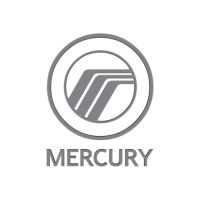
Do you have a question about the Mercury D4.2L D-Tronic and is the answer not in the manual?
Operator is responsible for safe boat operation and must understand manual.
Diesel engine exhaust may cause cancer, birth defects, and reproductive harm.
Serial numbers are keys to engineering details; specify them for service.
Process for product warranty registration in the US and Canada.
Process for warranty registration outside US and Canada.
Defines warranty terms, coverage, and exclusions for diesel products.
Details what is covered and not covered by the warranty, including exclusions.
Explains how the product warranty can be transferred to a subsequent purchaser.
Explains use of WARNINGS and CAUTIONS for safe operation.
Explains WARNING, CAUTION, and IMPORTANT notations for safe operation.
Function and use of the lanyard stop switch for safety.
Hazards of carbon monoxide and importance of ventilation.
How to ensure good ventilation to remove fumes.
Situations leading to poor ventilation and carbon monoxide exposure.
Avoid injury from being thrown or falling out when jumping waves/wakes.
Avoid injury from loss of control due to impact damage.
Familiarize with local rules and consider safety courses.
Lists essential safety equipment to carry on board.
Advice on passenger boarding and seating for safety.
How weight placement affects boat performance and handling.
Importance of a clean, smooth boat bottom for speed.
Causes and effects of cavitation on propeller and gear housing.
Causes of ventilation and its impact on propeller speed.
Table of RPM limits for different MCM engine models.
Guidance on choosing a propeller for optimal performance.
How altitude and weather impact engine power and boat speed.
Specified operational capabilities and duty cycles for engine use.
Steps to prevent freezing damage to the power package.
Importance of checking drain plugs and bilge pumps to prevent damage.
How the system cushions kick-ups and its limitations.
How water can enter cylinders during launching or sudden stops.
Steps for recovery after submersion and required dealer service.
Drive unit position and road clearance for trailering.
Procedure for reporting a stolen power package to authorities.
Importance of using specialized marine engine parts.
Advice on DIY repairs, ordering service manuals, and using tools.
How dealers diagnose EDI system issues using trouble codes.
Recommendations for multi-engine battery setups.
Step-by-step guide for initial engine break-in.
Rules for the first 20 hours of operation for optimal performance.
Procedure for breaking in the sterndrive unit gears.
Recommendations for extending power package life after break-in.
When to contact dealer for first season checkup or annual service.
Requirement for cylinder head retorque service for warranty continuation.
Identifies and explains basic Quicksilver gauges and monitors.
Explains functions of indicator lamps and test switches.
Explains overload protection for various systems.
Describes Neutral Lock Bar, Throttle Only Button, Trim Switch, etc.
Describes handle operation, throttle button, and tension adjustment.
Explains shift lever, throttle lever, friction, and detent screws.
Effects of trimming the drive unit up or out.
Effects of trimming the drive unit down or in.
How to use trailer, trim UP/OUT, and lower drive unit controls.
How to use trailer, trim UP/OUT, and lower drive unit controls.
Controls for dual engines, including two and three button types.
Operation of trim panel controls for two-lever systems.
Use of cold start levers/devices for starting in low temperatures.
Function of the manual engine stop lever.
Pre-start checks and procedures for safety and engine care.
Step-by-step guide for starting a cold engine.
Importance and procedure for warming up the engine.
Steps for starting warm engines.
Procedure for shifting gears and advancing throttle.
Procedure for shutting down the engine, including turbo cooling.
Table summarizing starting, after starting, underway, and stopping procedures.
Essential checks before starting D-Tronic engines.
Steps for starting cold D-Tronic engines.
Importance of warming up D-Tronic engines.
Steps for starting warm D-Tronic engines.
How to shift gears on D-Tronic models.
Steps for safely shutting down D-Tronic engines.
Table summarizing D-Tronic starting and stopping procedures.
Requirements and installation for seacocks.
Size, installation, and flow rate for seawater strainers.
Type and use of antifreeze/coolant for closed cooling systems.
Grade, ASTM standards, and cetane rating for diesel fuel.
Hazards of gasoline, alcohol, and fuel leakage.
Use of anti-gel additives for cold weather diesel fuel.
Approved oils and recommended grades for engine lubrication.
Detailed specifications for D3.6L and D4.2L engines.
Detailed specifications for D2.8L D-Tronic and D4.2L D-Tronic engines.
Detailed specifications for the D4.2L LD engine.
Oil and coolant capacities for different engine models.
Oil capacities for Bravo One, Two, and Three drives.
Safety precautions before working on the engine.
Lists of fluids and lubricants needed for maintenance.
Schedule for daily, weekly, and monthly maintenance tasks.
Maintenance tasks based on hours or years.
Procedure for checking and adding engine oil.
How to check the gear lube monitor for drive unit oil.
Procedure for checking power steering fluid level.
How to check and add coolant to the recovery bottle.
Checking the fluid level in the power trim pump reservoir.
Procedure for changing engine oil and filter.
Procedure for changing oil and filter on D4.2L LD engines.
Step-by-step guide for changing drive unit oil.
How to clean or replace the air filter element.
How to inspect and check tension of drive belts.
Procedures for servicing alternator, power steering, and vacuum pump belts.
Lubrication points for steering cable and pivot points.
Lubrication for shift and throttle cable pivot points.
Lubrication of gimbal bearing and propeller shaft.
Lubrication of engine coupler splines.
Lubrication of drive shaft fittings at transom and engine ends.
Steps to clean the seawater strainer and housing.
Procedure to flush the seawater cooling system with tap water.
Instructions for cleaning and flushing the fuel tank.
How to use the hand pump/primer for fuel system.
Steps to prime the fuel system if the engine is hard to start.
Procedure for filling the fuel filter after installation or draining.
Bleeding air from the fuel system.
How to drain water and dirt from the fuel filter.
Steps for replacing the water separating fuel filter.
When to inspect the seawater pump impeller.
Steps for removing Bravo One and Two propellers.
Step-by-step guide for installing Bravo One and Two propellers.
Steps for removing Bravo Three propellers.
Step-by-step guide for installing Bravo Three propellers.
Location and replacement of anodes in cooling systems.
Types and replacement of external sacrificial anodes.
Testing the MerCathode system for output.
How to replace trim cylinder anodes.
Replacing the anode on the Bravo One bearing carrier.
Precautions for painting boat hull and transom with anti-fouling paints.
Painting drive units and transoms, avoiding specific areas.
Spraying components with Corrosion Guard for protection.
Guidelines for lead-acid battery charging and handling.
Maintaining a clean and smooth boat bottom for maximum speed.
Instructions for storing batteries during winter.
Recommends dealer service for layup to prevent freezing damage.
Detailed instructions for draining the seawater cooling system.
Cleaning strainer, using propylene glycol, and preparing pump.
Steps to recommission the engine after maintenance or storage.
Possible causes and remedies for starter motor not cranking.
Possible causes and remedies for engine not starting or starting hard.
Causes and remedies for general poor engine performance.
Reasons for excessive engine temperature and solutions.
Causes and remedies for insufficient engine temperature.
Causes and remedies for low engine oil pressure.
Causes and remedies for battery not charging.
Causes and remedies for hard operation, binding, or free-play.
Causes and remedies for hard or jerky steering.
Causes and remedies when power trim motor doesn't run.
Causes and remedies when motor runs but unit doesn't move.
Recommends returning to local authorized dealer for service.
How to find service when away from local dealer.
Where to direct inquiries for parts and accessories.
Steps to take if a problem cannot be resolved by the dealership.
Lists telephone, fax, and mail contacts for service offices worldwide.
How to obtain English language manuals and literature.
How to obtain manuals and literature in other languages.
Contact information for manuals in languages other than English.
How to order additional literature for your power package.
Template for recording maintenance and repair history.


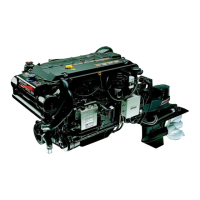

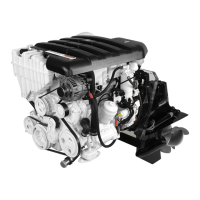


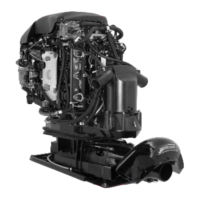

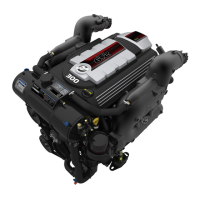

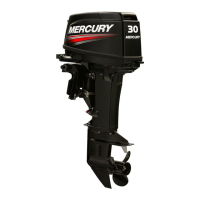
